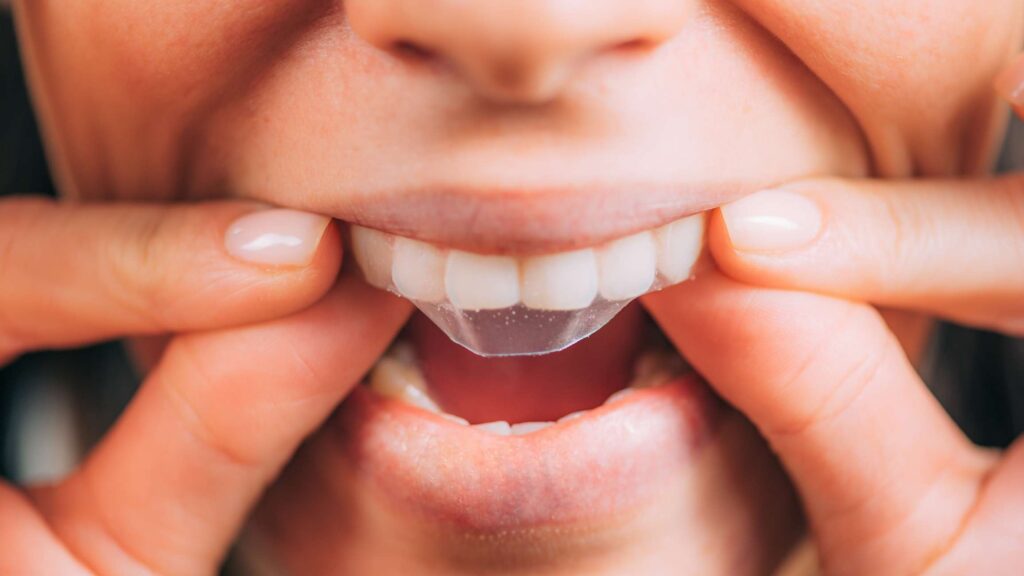Having discolored teeth is a common concern, with 80% of people wanting a whiter smile. Whitening strips are a safe and effective way to remove stains and create brighter teeth. The key is using them appropriately and consistently.
Typically, you will use whitening strips one to two times per day for two weeks, for about 30 minutes at a time. These timeframes may vary depending on the brand you use and its individual instructions.
When using whitening strips, look for strips that have the American Dental Association (ADA) seal of approval. To date, Crest 3D White Strips are the only white strips listed on the ADA website. To safely use these products, the manufacturer recommends adhering to the following steps:
- Choose a whitening strip with a lower concentration of whitening product at first to check for sensitivity.
- Refrain from brushing your teeth right before applying the strip, as this helps them adhere better. However, your teeth should be clean.
- Remove the whitening strip from its packaging and put the gel side on your teeth.
- Press it firmly against your teeth and fold the remainder of the strip behind your teeth.
- Avoid allowing the gel strip to touch your gums.
- Pay attention to the manufacturer’s instructions for how long to wear the strips and how often to apply them.
- Don’t use the product longer than recommended.
Typically, whitening strips can lighten the shade of your teeth by one to two shades. It may take a few days of consistent use before you see results.
Whitening strips also do not work on crowns, fillings, veneers, implants, and other similar products. These strips are only meant to whiten natural teeth. If you have stains on these types of dental products, you will need to talk with a dentist about your whitening options.
For the most part, whitening strips are safe products to use as long as you follow your dentist’s instructions and adhere to the manufacturer’s instructions. However, there are a few risks, especially if you use them incorrectly or for a longer period than is recommended.
Some potential side effects of using whitening strips include:
- Tooth sensitivity: Tooth sensitivity is the most common side effect of using whitening strips, especially if you use them more than recommended. As long as you follow the manufacturer guidelines, your sensitivity should go away in a few days.
- Gum irritation: You may experience gum irritation if you allow the gel on the whitening strip to touch your gums. Gum irritation can also occur if you use the product longer than recommended.
- Tooth damage: While uncommon with whitening strips, some whitening regimens may cause tooth damage and erosion, especially if they are aggressive. It is also possible for your teeth to lose minerals, become dehydrated, and experience pulp damage.


